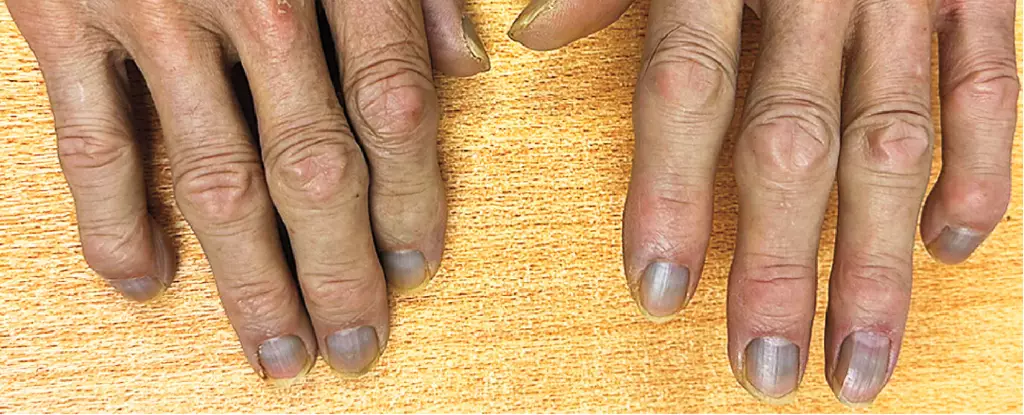In the intricate world of medicine, each case presents its unique narrative, often weaving together surprising elements that challenge our understanding. One such perplexing situation arose at a Hong Kong hospital when an 84-year-old man sought treatment for urinary flow obstruction. What began as a seemingly routine consultation unveiled an extraordinary medical mystery: the patient displayed an unusual grayish tint to his skin, eyes, and nails, a condition that had persisted for five years. This striking presentation would soon reveal itself as a symptomatic manifestation of a rare condition known as argyria.
Argyria, though rare, is characterized by an abnormal accumulation of silver particles within the body’s tissues, leading to the distinctive slate-gray discoloration. Blood tests conducted on the patient illuminated the underlying issue—his silver levels were over 40 times higher than that of the average individual. This alarming concentration suggested prolonged exposure to the metal, but the source of such exposure remained elusive. Traditionally, workers involved with silver, such as miners or artisans, were known to develop this condition through occupational hazards. Interestingly, a significant number of argyria cases can also be traced back to medical treatments that incorporate colloidal silver, a substance marketed as a curative dietary supplement despite a lack of scientific backing.
Colloidal silver has been touted for its alleged antimicrobial properties, leading some individuals to self-medicate, placing themselves at risk for silver toxicity. The U.S. Food and Drug Administration (FDA) has produced cautionary statements regarding these treatments, underlining that no substantial evidence supports their efficacy. Despite this, the availability and popularity of such products persist globally, emphasizing a dichotomy between proven medical practice and alternative remedies that can lead patients astray. This case raises critical questions about the intersection of consumer health decisions in a world where unregulated supplements can cause long-term health ramifications.
Upon entering the body, silver can be absorbed via the lungs, skin, or gastrointestinal tract in a charged state, allowing it to navigate bodily systems with ease. It accumulates in various tissues, particularly where ultraviolet (UV) rays penetrate, which can trigger chemical reactions that alter the silver’s characteristics. The transformation into gray or blue compounds provides a vivid visual cue for both physicians and the affected individuals. Strikingly, in this particular case, the elderly man’s profession as a waiter failed to offer any visible source of silver exposure, indicating that the origins of his condition could lie elsewhere, potentially within consumer products or incidental exposure in his daily life.
While the cosmetic effects of argyria may cause social discomfort or psychological distress due to the noticeable alteration of appearance, the condition itself is not typically linked to significant health issues, especially at lower concentrations. However, excessive silver buildup may affect the bioavailability of certain medications, including antibiotics and hormonal treatments like thyroxine. Despite the benign nature of the condition from a clinical point of view, the persistent gray hue can serve as a constant reminder of the implications associated with health choices and alternative treatments devoid of evidence-based support.
As with many medical enigmas, the case of this patient highlights the intricate dance between exposure, diagnosis, and the subjective experience of health conditions. With his diagnosis noted, medical professionals will closely monitor the patient’s condition, potentially providing insights into silver accumulation’s underlying mechanisms and broader implications for public health. Ultimately, this story serves as a reminder of the necessity of critical engagement with medical information, urging individuals to approach alternative therapies with caution and encouraging a vigilant, evidence-based approach to health and well-being. The quest to uncover the origins and effects of argyria continues, blurring the lines between science, medicine, and human experience.


Leave a Reply